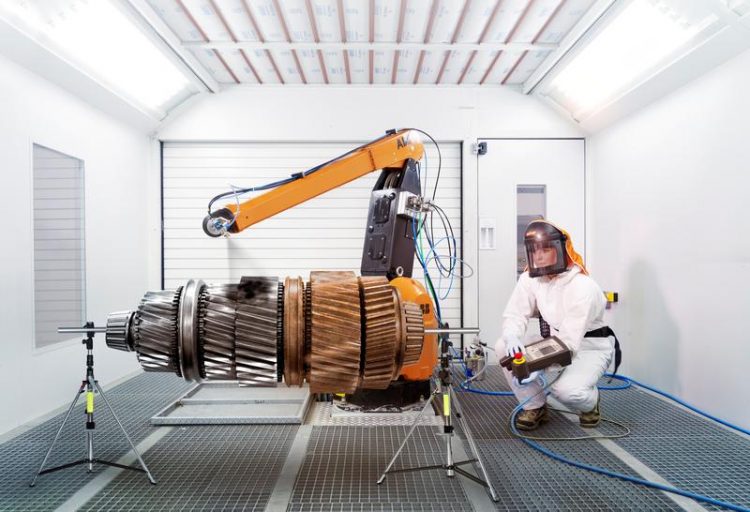New low friction coating allows grease-free lubrication and corrosion protection

Grease-free lubrication and corrosion protection at once via spray coating Source: Uwe Bellhäuser, only free within this press release
They attract dirt, debris and dust, and over time form lumps or become resinous. Machine parts then have to be intensively cleaned and regreased, which leads to more frequent maintenance, greater consumption of resources, polluting waste or machine breakdowns.
Researchers at the INM – Leibniz Institute for New Materials have now developed a functional coating which lubricates without grease and protects against corrosion at the same time. It is suitable as a coating for metals and metal alloys such as steel, aluminum or magnesium.
The INM from Saarbruecken will be one of the few German research institutions at the TechConnect World trade fair on 16 and 17 June in Washington DC, USA, where it will be presenting this and other results. Working in cooperation with the VDI Association of German Engineers it will be showcasing its latest developments at Stand 301 in the German Area.
“The thing about our low friction coating is its composition and structure”, explains Carsten Becker-Willinger, Head of the Nanomers Program Division. “We have incorporated platelet-like solid lubricants and platelet-like particles in a binder. When this mixture is applied to a surface, it produces a well-ordered structure in which these various particles are arranged in a roof tile pattern”, he adds.
This forms a so-called transfer film between the low friction coating and the object through which surfaces can slide with the minimum of friction. “The particular mixture ratio means that our composite has a very low coefficient of friction. If we only used a solid lubricant, the coefficient of friction would be considerably higher”, says the chemist.
The roof tile structure not only provides low-friction sliding, it also acts as a barrier. This is a particular advantage because as a result the material also prevents moisture or salts penetrating metal surfaces, thus also protecting against corrosion. In a neutral salt spray context, the composite has a corrosion resistance of over 1000 hours on low-alloy steel.
The bonded coating can be applied using classic wet chemistry processes such as spraying or dipping. The roof tile structure forms by simple thermal curing without any further assistance in self-organization.
Your expert:
Dr. Carsten Becker-Willinger
INM – Leibniz Institute for New Materials
Head Nanomers®
Phone: +49681-9300-196
nanomere@inm-gmbh.de
INM conducts research and development to create new materials – for today, tomorrow and beyond. Chemists, physicists, biologists, materials scientists and engineers team up to focus on these essential questions: Which material properties are new, how can they be investigated and how can they be tailored for industrial applications in the future? Four research thrusts determine the current developments at INM: New materials for energy application, new concepts for medical surfaces, new surface materials for tribological applications and nano safety and nano bio. Research at INM is performed in three fields: Nanocomposite Technology, Interface Materials, and Bio Interfaces.
INM – Leibniz Institute for New Materials, situated in Saarbruecken, is an internationally leading centre for materials research. It is an institute of the Leibniz Association and has about 195 employees.
Media Contact
All latest news from the category: Materials Sciences
Materials management deals with the research, development, manufacturing and processing of raw and industrial materials. Key aspects here are biological and medical issues, which play an increasingly important role in this field.
innovations-report offers in-depth articles related to the development and application of materials and the structure and properties of new materials.
Newest articles

Bringing bio-inspired robots to life
Nebraska researcher Eric Markvicka gets NSF CAREER Award to pursue manufacture of novel materials for soft robotics and stretchable electronics. Engineers are increasingly eager to develop robots that mimic the…

Bella moths use poison to attract mates
Scientists are closer to finding out how. Pyrrolizidine alkaloids are as bitter and toxic as they are hard to pronounce. They’re produced by several different types of plants and are…

AI tool creates ‘synthetic’ images of cells
…for enhanced microscopy analysis. Observing individual cells through microscopes can reveal a range of important cell biological phenomena that frequently play a role in human diseases, but the process of…





















